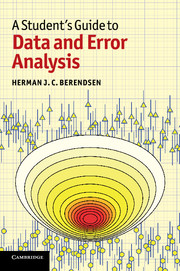Part III - Python codes
Published online by Cambridge University Press: 05 June 2012
Summary
This appendix contains programs, functions or code fragments written in Python. Each code is referred to in the text; the page where the reference is made is given in the header.
First some general instructions are given on how to work with these codes. Python is a general-purpose interpretative language, for which interpreters are available for most platforms, including Windows. Python is in the public domain and interpreters are freely available. Most applications in this book use a powerful numerical array extension NumPy, which also provides basic tools in linear algebra, Fourier transforms and random numbers. Although Python version 3 is available, at the time of writing NumPy requires Python version 2, the latest being 2.6. In addition, applications may require the scientific tools library SciPy, which relies on NumPy. Importing SciPy automatically implies the import of NumPy.
Users are advised first to download Python 2.6, then the most recent stable version of NumPy, and then SciPy. Further instructions for Windows users can be found at www.hjcb.nl/python.
There are several options to produce plots, for example Gnuplot.py, based on the gnuplot package or rpy based on the statistical package “R.” But there are many more. Since the user may find it difficult to make a choice, we have added yet another, but very simple to use, plotting module called plotsvg.py. It can be downloaded from the author's website.
- Type
- Chapter
- Information
- A Student's Guide to Data and Error Analysis , pp. 167 - 196Publisher: Cambridge University PressPrint publication year: 2011



